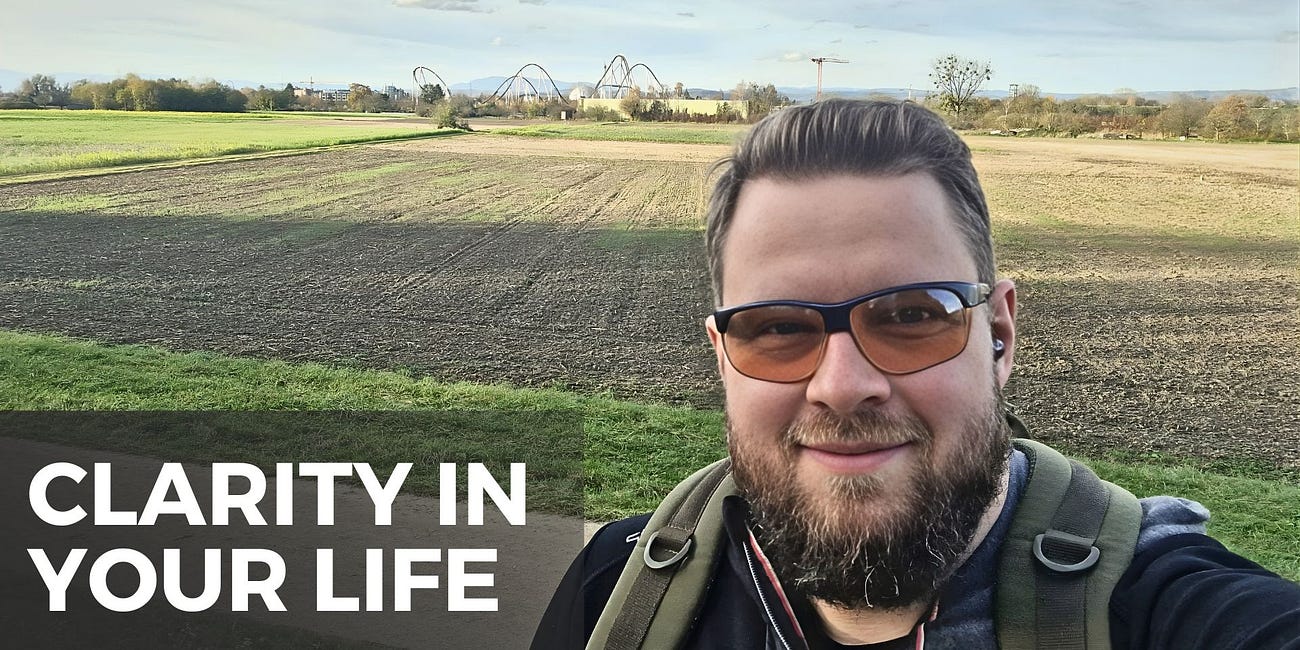Clarity Is Not Found — It Is Created
A Post About Clarity, How to Reach It, and Why Most Leaders Struggle to Get There
Act I — The Opening:
When Clarity Feels Out of Reach
Clarity in leadership is often misunderstood as a sudden insight that will eventually reveal itself. Many leaders wait for clarity as though it were an external event—something that arrives when the timing is right or when circumstances fall into place. But in reality, clarity is frequently elusive, especially under pressure.
It slips away when the mind is overwhelmed, when emotions are suppressed, or when decisions are made in haste.
We are creators
Clarity is not something that finds you. It is something you actively create. It emerges when you establish the internal conditions necessary for it to unfold. When leaders intentionally cultivate clarity through awareness, honesty, and presence, they gain the stability required to navigate uncertainty. Clarity becomes less of a mystery and more of a skill.
“Your mind is the sculptor of your life. What you choose to think, you choose to create.”
— Inspired by Marcus Aurelius
Act II — The Descent:
Unpacking the Source of Clarity
To cultivate clarity, it is essential to identify the barriers that hinder it. Understanding these internal obstacles allows leaders to work with themselves rather than against themselves.
Understanding the Pressure
Leadership emphasizes composure, decisive choices, and control. While these qualities are valuable, they often encourage over-regulation—tight emotional control that leads to suppression rather than stability. Over time, this emotional suppression creates numbness, disconnecting leaders from their inner world and their ability to discern what is true.
The Costs of Over-Regulation
Never suppress your feelings; face them, accept them, and stay in control.
When leaders suppress their emotional responses:
They disconnect from intuition. Intuition is a subtle but powerful source of clarity. When emotions are ignored or buried, intuition becomes muted, making decision-making more complex and more mentally taxing.
They experience increased overwhelm. Without emotional awareness, challenges accumulate internally, creating tension, exhaustion, and a sense of disorientation or misalignment.
The Layered Human Experience
Human experience moves in layers, each influencing how clarity forms:
Surface Level – Behaviors: These are the visible actions and reactions that others observe.
Convictions: Deeply held beliefs shaped by upbringing and environment.
Values: The core truths that define who we are when we are fully honest with ourselves.
Innermost Layer – Fear: At the center lies fear; not something to eliminate, but something to acknowledge. Fear acts as a gatekeeper. Accessing clarity requires passing through this layer, meeting fear with presence instead of avoidance.
The Role of Resistance
Resistance often appears as discomfort, hesitation, or internal friction. Many leaders misread resistance as a sign to retreat, assuming that discomfort signals danger or misalignment. In truth, resistance is often a compass—pointing directly toward the work, decisions, or truths that matter most.
Embracing moments of resistance provides insight. It highlights growth edges, emotional patterns, and areas of unspoken truth. When leaders learn to lean into resistance with curiosity, they discover clarity hidden beneath discomfort.
Flourishing Under Rhythm, Not Pressure
Understand this: You need to have your direction before you enter pressure; otherwise, you will only survive, not progress. Work on that; you need always to be clear about which direction you need to move.
Clarity does not thrive under pressure. Intense pressure narrows the mind, accelerates overwhelm, and disrupts emotional balance.
Instead, clarity flourishes through rhythm:
Regular self-reflection
Emotional check-ins
Quiet moments to pause, breathe, and recalibrate
Slow, spacious conversations that deepen understanding and connection
Key Takeaways
Recognize and confront barriers to clarity, especially emotional suppression and fear.
Understand the layers of your inner experience and how each influences your decisions.
Treat resistance as a guiding force rather than a deterrent.
Build clarity through rhythm and consistent inner practices—not pressure or urgency.
By following these structured insights, leaders can establish a clear pathway—an essential foundation for effective and grounded leadership.
Do you have Clarity in your Life?
We often discuss the importance of clarity — clarity in communication, clarity in vision, and clarity in life. However, when you examine it closely, clarity is one of the most misunderstood things we pursue.
Act III — The Ascent:
Creating Clarity and Leading from Within
Stoic leadership is not about shutting down emotions or becoming unaffected by challenges.
Clarity becomes accessible when leaders reconnect with themselves and their emotions. It is a process of active participation rather than passive waiting. By committing to practices that support emotional regulation, not over-regulation, leaders cultivate inner stability, allowing clarity to become a habit.
When clarity is cultivated consistently, leaders begin to respond rather than react. They listen before deciding. They act from alignment rather than fear. Their decisions become precise, their communication grounded, and their leadership presence steady.
Stoic leadership is not about shutting down emotions or becoming unaffected by challenges. It is about becoming emotionally present, facing fears with honesty, and creating clarity every day through intention and rhythm. This approach not only fosters clarity but also resilience, wisdom, and self-trust.
Clarity is built. And in building it, leaders strengthen themselves. They align their actions with their vision, navigate complexity with calm, and lead from a place of authenticity and internal grounding. This is what defines a Stoic Leader—one who creates clarity from within and leads with unwavering presence.
“The impediment to action advances action. What stands in the way becomes the way.”
— Marcus Aurelius, Meditations 5.20
—Adrian




